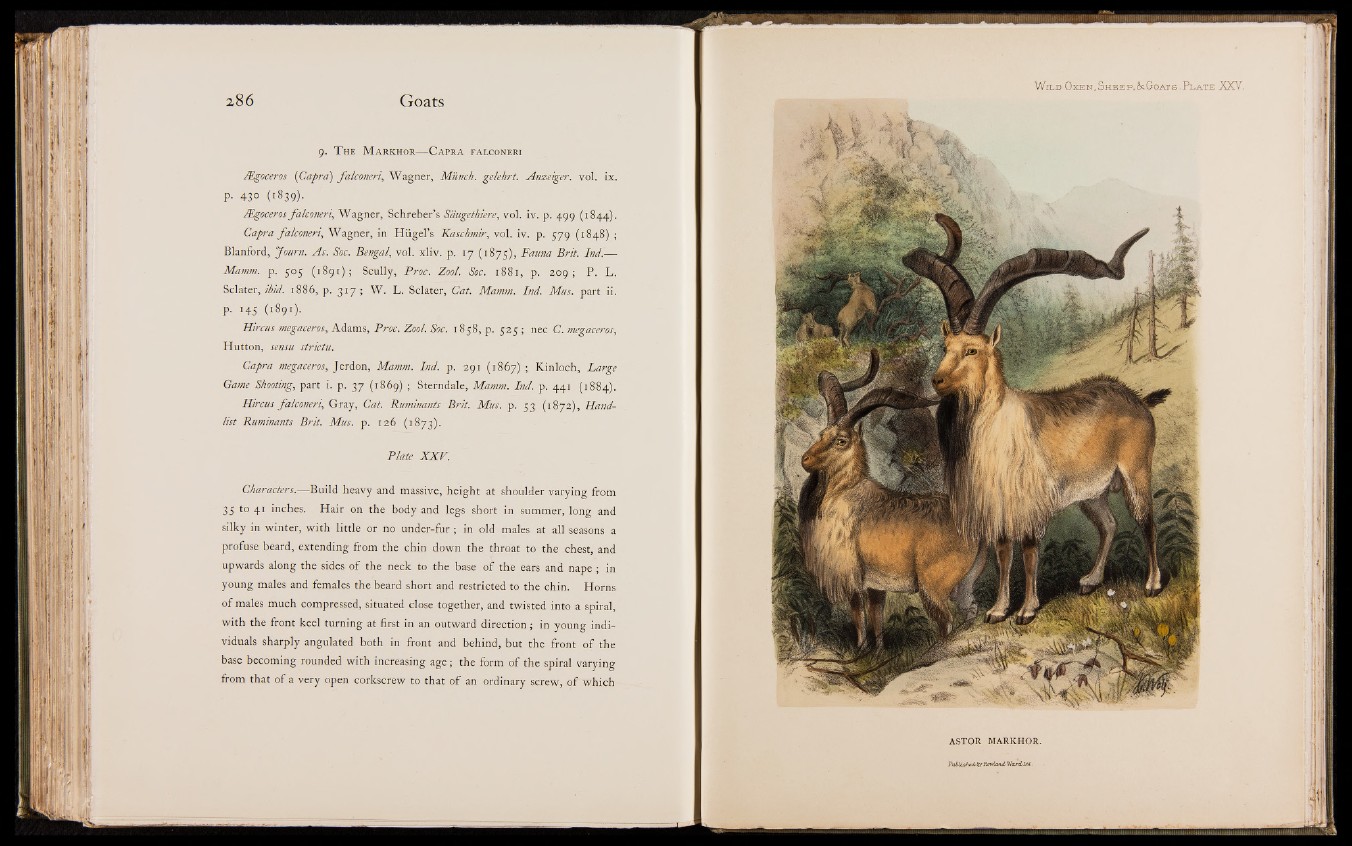
g. T he M a r kh o r— C a p r a falco n er i
Mgoceros (Capra) falconeri, Wagner, Munch, gelehrt. Anzeiger. vol. ix.
P- 43° (l8 39)-
Mgoceros falconeri, Wagner, Schreber’s Sdugethiere, vol. iv. p. 499^844).
Capra falconeri, Wagner, in Hiigel’s Kaschmir, vol. iv. p. 579 (1848) ;
Blanford, Journ. As. Soc. Bengal, vol. xliv. p. 17 (1875), Fauna Brit. Ind.—
Mamm. p. 505 (1891) ; Scully, Prod. Zool. Soc. 1881, p. 209; P. L.
Sclater, ibid. 1886, p. 3 17 ; W. L. Sclater, Cat. Mamm. Ind. Mus. part iM
p. 145 (1891).
Hircus megaceros, Adams, Proc. Zool. Soc. 1858, p. 325 ; nec C. megaceros,
Hutton, sensu strictu.
Capra megaceros, Jerdon, Mamm. Ind. p. 291 (1867) ; Kinloch, Large
Game Shooting, part i. p. 37 (1869) ; Sterndale, Mamm. Ind. p. 441 (1884).
Hircus falconeri, Gray, Cat. Ruminants Brit. Mus. p. 53 (1872), Handlist
Ruminants Brit. A fe « p . 126 (1873).
Plate X X V .
CharactersSfaWA heavy and massive, height at shoulder varying from
35 to 4 1 inches. Hair on the body and legs short in summer, long and
silky in winter, with little or no under-fur ; in old males at all seasons a
profuse beard, extending from the chin down the throat to the .chest, and
upwards along the sides of the neck to the base of the ears and nape ; in
young males and females the beard short and restricted to the chin. Horns
of males much compressed, situated close together, and twisted into a spiral,
with the front keel turning at first in an outward direction; in young individuals
sharply angulated both in front and behind, but the front of the
base becoming rounded with increasing age; the form df the spiral varying
from that of a very open corkscrew to that of an ordinary screw, pf which